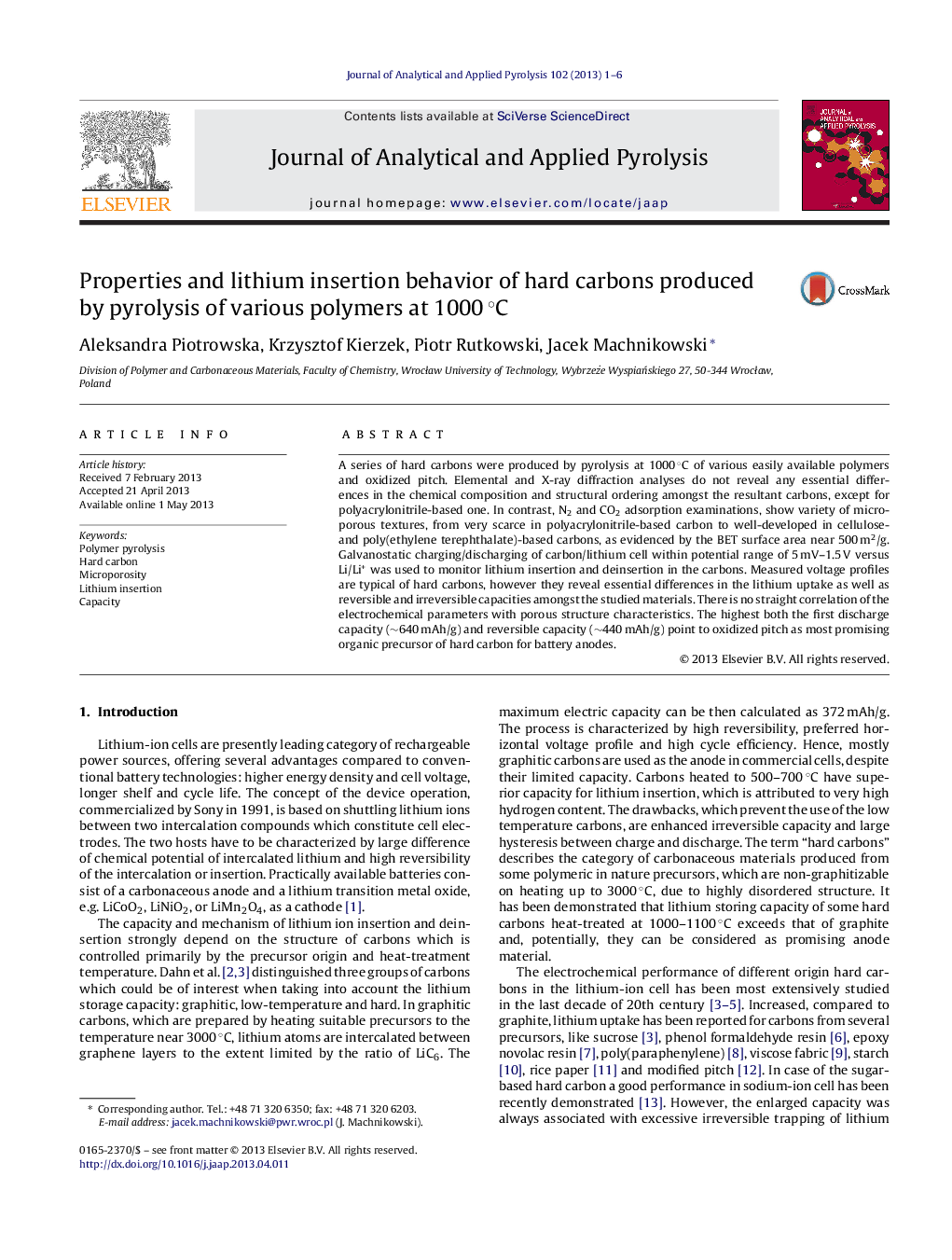| Article ID | Journal | Published Year | Pages | File Type |
|---|---|---|---|---|
| 1196881 | Journal of Analytical and Applied Pyrolysis | 2013 | 6 Pages |
•Carbons from different polymers compared as anode material in lithium-ion battery.•No straight correlation between physicochemical and electrochemical properties.•Highest Li insertion capacity of carbons from oxidized pitch, cellulose and PAN.
A series of hard carbons were produced by pyrolysis at 1000 °C of various easily available polymers and oxidized pitch. Elemental and X-ray diffraction analyses do not reveal any essential differences in the chemical composition and structural ordering amongst the resultant carbons, except for polyacrylonitrile-based one. In contrast, N2 and CO2 adsorption examinations, show variety of microporous textures, from very scarce in polyacrylonitrile-based carbon to well-developed in cellulose- and poly(ethylene terephthalate)-based carbons, as evidenced by the BET surface area near 500 m2/g. Galvanostatic charging/discharging of carbon/lithium cell within potential range of 5 mV–1.5 V versus Li/Li+ was used to monitor lithium insertion and deinsertion in the carbons. Measured voltage profiles are typical of hard carbons, however they reveal essential differences in the lithium uptake as well as reversible and irreversible capacities amongst the studied materials. There is no straight correlation of the electrochemical parameters with porous structure characteristics. The highest both the first discharge capacity (~640 mAh/g) and reversible capacity (~440 mAh/g) point to oxidized pitch as most promising organic precursor of hard carbon for battery anodes.
